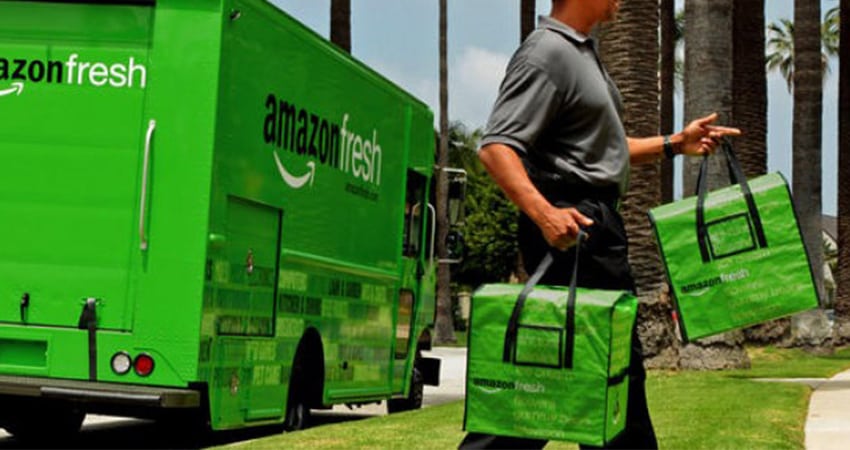Punch, counter-punch.
Amazon waited an entire month to swing back at Walmart’s new grocery delivery program, making delivery from Amazon Fresh and Whole Foods free for Prime members by eliminating the $14.99 per month charge on orders of at least $35.
This will add to Amazon’s already gargantuan shipping and delivery costs, which ballooned 46% in Q3 to $9.6 billion as it continues to buy share and competitive clout. The company made usually cheery analysts and investors nervous when profits came in lower than expected.
Under Delivery Unlimited from Walmart, subscribers pay $98 per year or $12.95 per month for same-day grocery delivery from about 1,500 U.S. stores, compared to $7.95 or $9.95 per order outside the program.
“Prime members love the convenience of free grocery delivery on Amazon, which is why we’ve made Amazon Fresh a free benefit of Prime, saving customers $14.99 per month,” said Stephenie Landry, VP of Grocery Delivery for Amazon in a blog post. “Grocery delivery is one of the fastest growing businesses at Amazon, and we think this will be one of the most-loved Prime benefits.”
One- and two-hour grocery delivery is available in most places, Amazon said. It will offer the free service to all Prime members currently shopping either Fresh or Whole Foods, but other members can sign up and wait for an approval notification.
The company is anticipating high demand so it makes sense to control the addition of new users. It’s available in 2,000 cities and towns, most of that coverage coming from its 480 Whole Foods stores; only 21 locations are covered by Amazon Fresh, the company told Tech Crunch. Amazon Fresh orders are fulfilled from small centers close to population centers.
Traditional grocers like Wakefern, Albertsons and Kroger as well as big boxes like Walmart and Target have been fighting back against Amazon’s grocery push by stepping up curbside pickup programs and investing heavily in automation and micro fulfillment centers.
After scaling back Amazon Fresh operations in nine states in 2017, the company has been building it up again this year, adding the service in Las Vegas, Houston, Minneapolis and Phoenix in recent months according to CNET.


What looks like a battle between Amazon and more traditional retail giants like Walmart is actually something much bigger. We are now witnessing the automation of the grocery business. This automation process looks very different from the huge combines and industrial robots that swept through the agricultural and manufacturing sectors.
The key to reducing these costs is automation technology that enables end users to serve themselves. “Automated self-service” is what automation looks like when it meets the service economy and the grocery businesses is no exception.
Thanks for your comments. Yes the story is much bigger than the battle bots at the top. Automation and robotics are changing ecommerce including grocery at a dizzying pace. Self-serve will be a major component but not the whole story. That said, physical transportation infrastructure and networks cannot handle the increasing flood of online orders indefinitely.
Agreed on the logistics point. Automated self-service is already upending the infrastructure for fulfilling the new models of distribution it requires. Did you see Alphabet’s recent secret logistics summit?
I did not. Very interesting. Thanks for sharing.